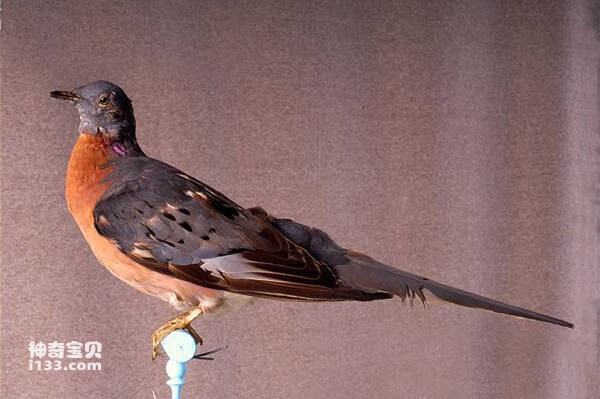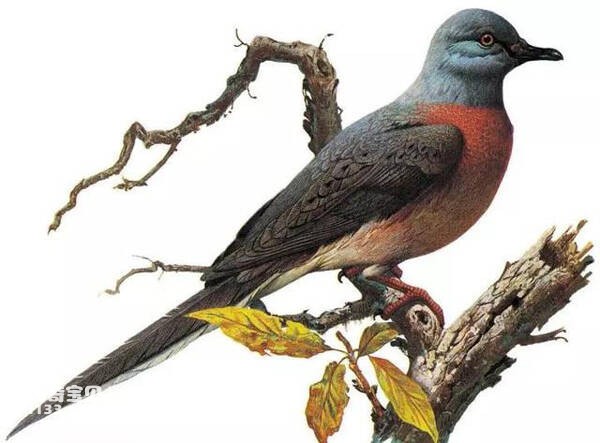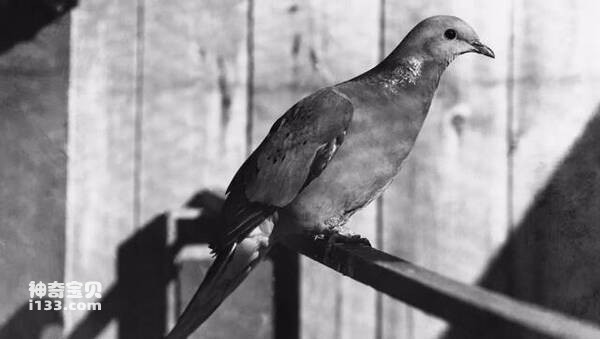Passenger pigeon
IUCN
LCBasic Information
Scientific classification
- name:Passenger pigeon
- Scientific Name:North American passenger pigeon, Wandering pigeon, passenger pigeon, travelling pigeon
- Outline:Landfowl
- Family:
Vital signs
- length:32-41cm
- Weight:250-340g
- lifetime:About 30 years
Feature
It is two to three times the size of the mourning dove and resembles a turtle dove.
Distribution and Habitat
It is native to the forest belt south of northeastern North America, west to the Rocky Mountains, extending into Pennsylvania. South-eastern migration to Florida, Louisiana and Mexico in the autumn. Passenger pigeons are bred primarily in southern New England, New York, the Mid-Atlantic states including Pennsylvania, the Great Lakes region as far west as Minnesota, and the Upper Mississippi Valley in southern Kentucky.
It inhabits broad-leaved forests and mixed forests in forested plains, river valleys, and hilly areas of North America, and often lives in the morning and evening on the dead branches of trees to bathe in the sun.
Appearance
The passenger pigeon is a medium-sized pigeon. It is 32-41 cm long, has a wingspan of 65 cm, and weighs about 250-340 g. It is two to three times the size of the mourning dove and resembles a turtle dove. The passenger pigeon's body is oval in shape, guided by a long feathered tail and propelled by well-set wings, and its muscles are strong and powerful for the size of the species. As it sweeps across the sky, the human eye can hardly catch its flight path, and in vain search, the bird has long since disappeared.
Male: A straight, normal length, slender beak with a broad base and a rough fleshy covering; The upper jaw drops slightly at the tip and is deformed at the edge. Small head, slender neck, relatively full body. The legs are short and strong, the front is scaly, the toes are slightly webbed at the base, and the claws are short and blunt. The feathers are mixed on the lower part of the neck and compact on the back. The wings are long and the secondary feathers are longest
Details
Passenger Pigeon (scientific name: Ectopistes migratorius) Passenger Pigeon, no subspecies, as the name suggests, is a particular kind of pigeon that likes to travel.

Passenger pigeons are social birds that live in large groups in forests, gathering in large groups covering hundreds of square kilometers, often with a hundred passenger pigeon nests in a single tree. It is a species that typically lives in groups of more than 100 million individuals. The passenger pigeon is also a migratory bird unique to the North American continent, inhabiting a wide range of North America from Midwestern Canada to the United States in the summer and migrating to places such as Mexico and Cuba in the winter. During migration, a flock of passenger pigeons can reach 1.6 km wide and 500 km long. Such a large flock contains an astronomical number of passenger pigeons, sometimes exceeding 2 billion.

Passenger pigeons feed mainly on seasonal crops, plant fruits such as berries, nuts, acorns, chestnuts, grapes, cherries, dogwood, blackberries, etc. They also eat insects and invertebrates. Unfortunately, the passenger pigeon's diet also includes cultivated grains such as wheat, barley, rye and oats, and they passed through the fields cultivated by European settlers and devoured the people's crops, which is one of the reasons why the species was hunted by humans.

Passenger pigeons nest in clusters of hundreds of thousands of pairs, and these nests stretch for several kilometers in their habitat, covering several square kilometers of forest. The breeding period is from March to September. The nest is made of twigs in a tree. Each litter lays 1 egg. Both sexes incubate the eggs, and the incubation period is 12-13 days. The chicks feed on pigeon milk secreted by their parents during the first week. Life span up to 30 years.
The last wild passenger pigeon was killed in 1900. On the afternoon of September 1, 1914, the last female passenger pigeon in captivity, called Martha, died at the Cincinnati Zoo in central Ohio, representing the disappearance of passenger pigeons from the earth. The exact causes of its extinction are difficult to determine, but widespread human clearing of the wild broad-leaved tree species that provided its main food, along with extensive expansion of the rail network and telegraph system, destruction of nesting grounds, and transport of young birds to market were probably the two most important factors in the species' extinction. Other important factors include overshooting, the spread of new plagues, and, in their final years, the breakdown of social structures.
Listed in the International Union for Conservation of Nature Red List of Threatened Species (IUCN) for 2016 ver 3.1 - Extinct (EX).
Protect wild animals and eliminate wild meat.
Maintaining ecological balance is everyone's responsibility!








